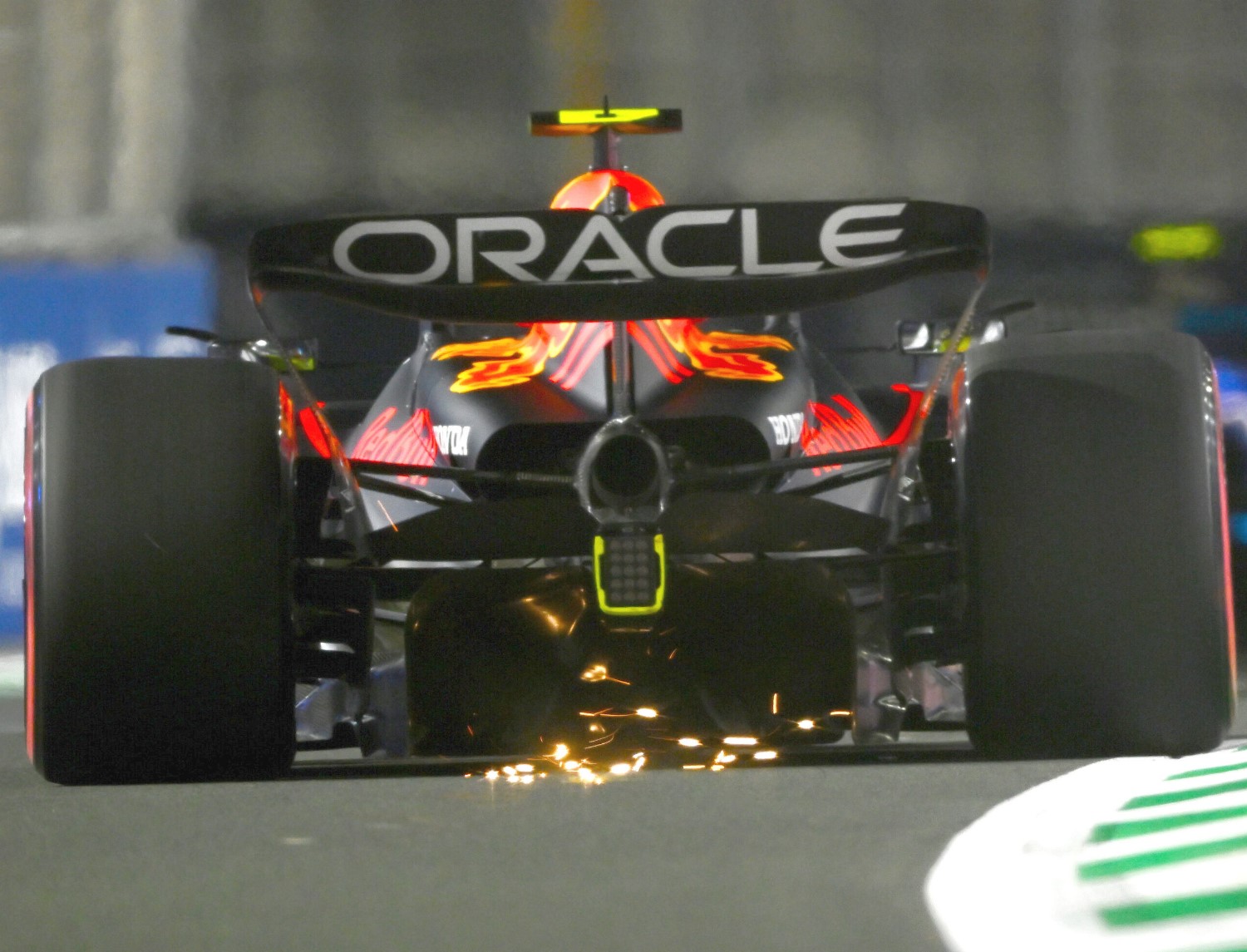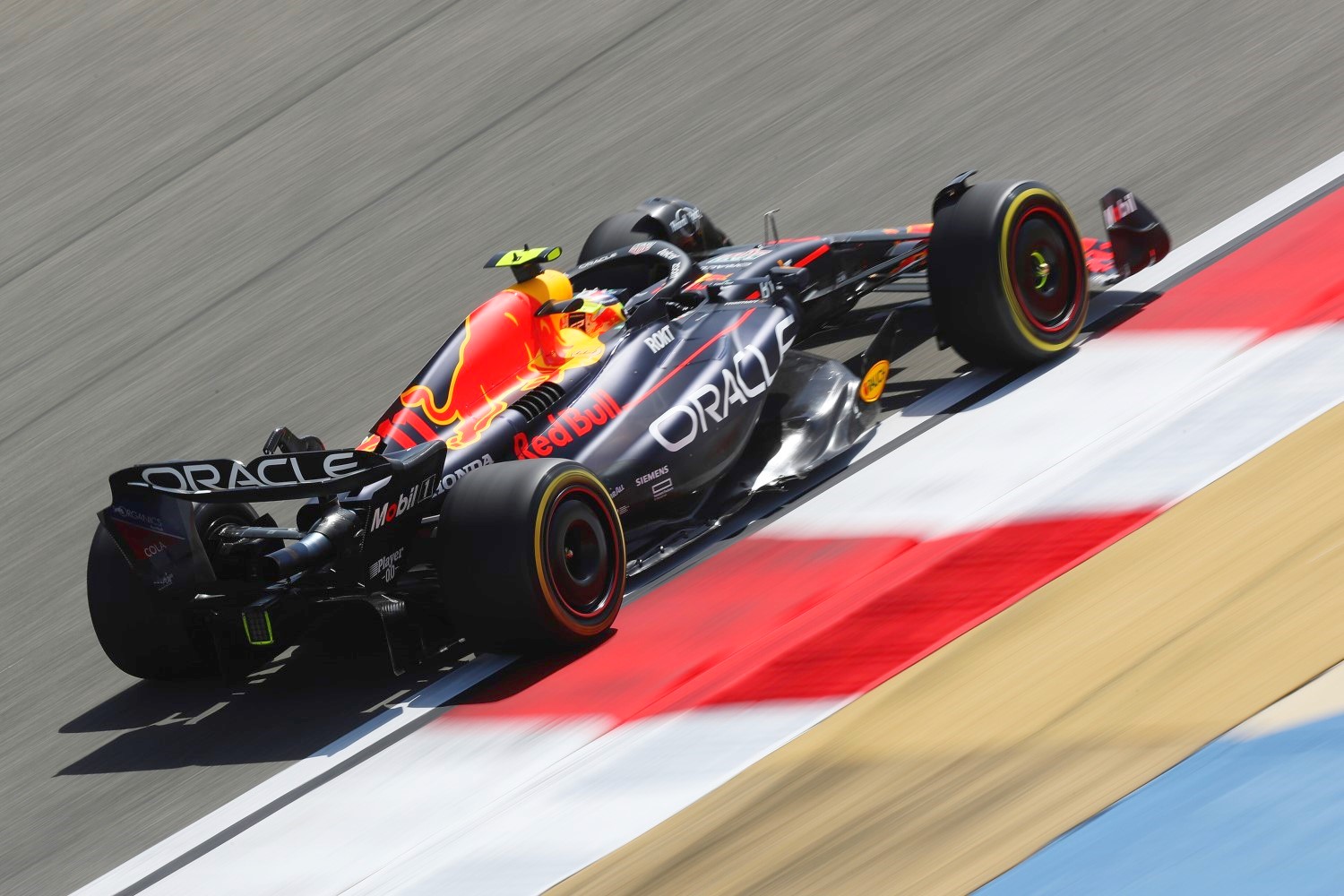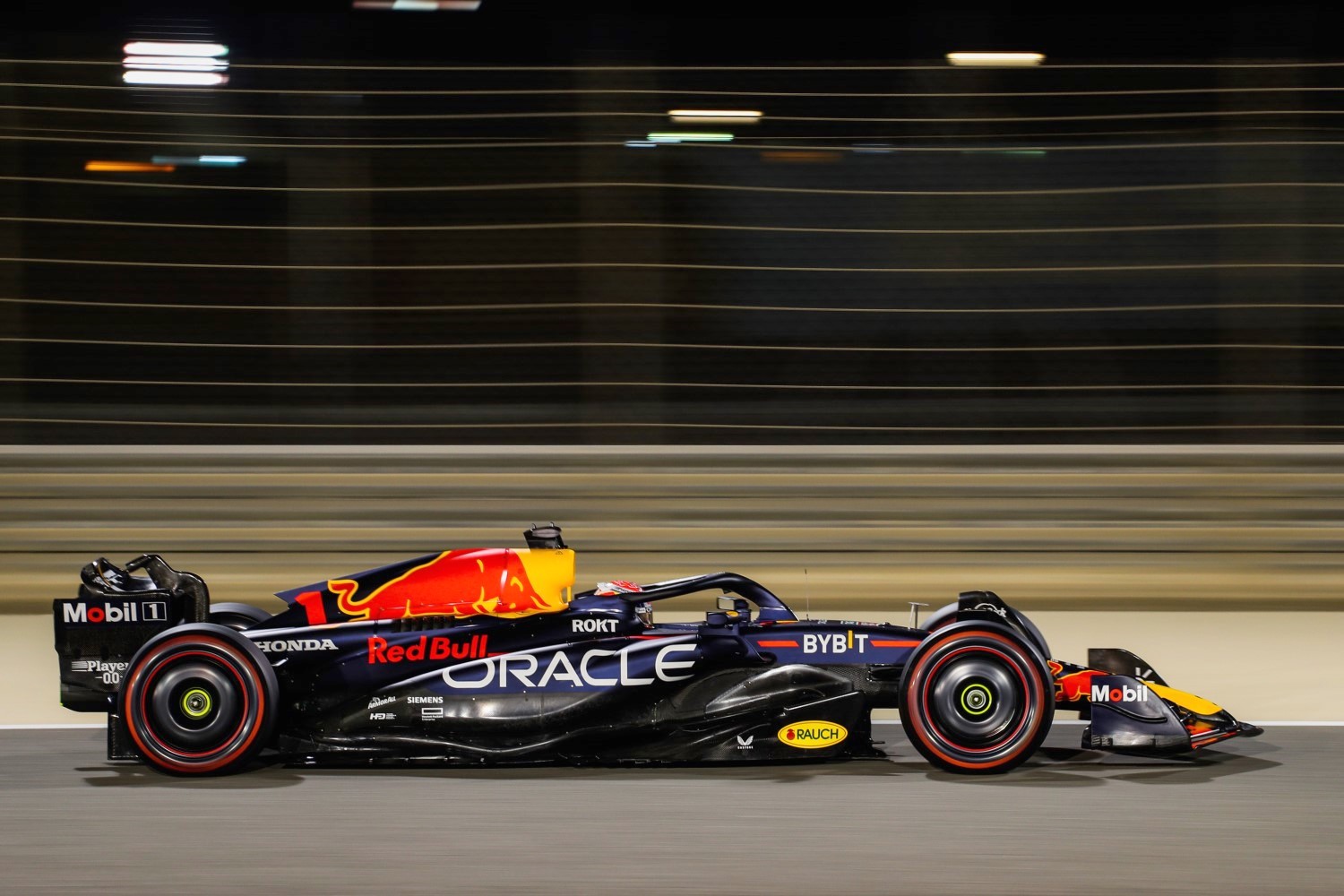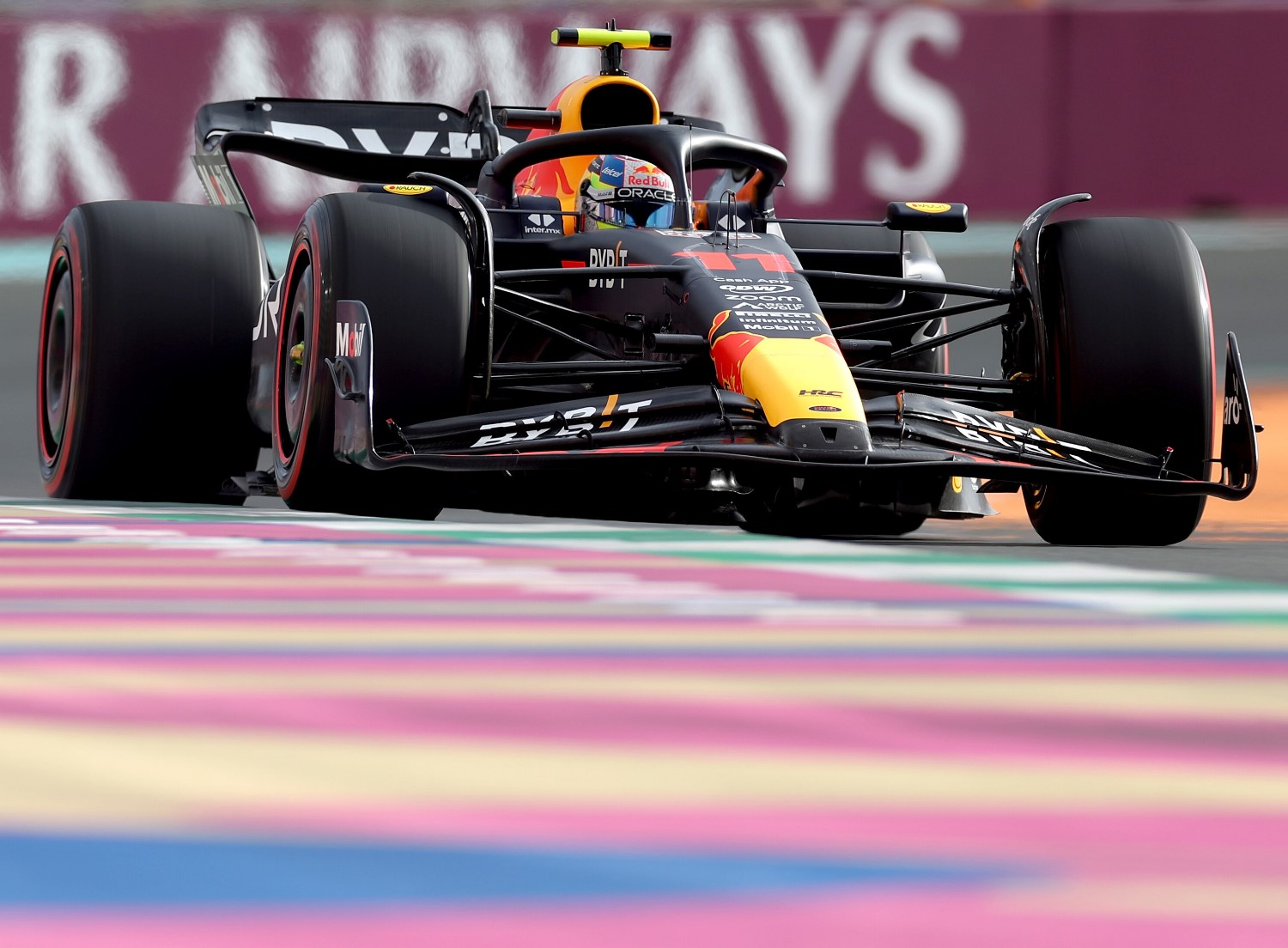F1: Red Bull DRS Speed Secret revealed (Update)
–by Mark Cipolloni–
F1 tech expert Mark Hughes highlights of Formula 1.com one of the design secrets that make the Red Bull RB19 so fast.
The Suspension
They have enhanced the level of anti-squat in the rear suspension – by mounting the rearmost top wishbone link even higher than before, to a structure above that of the gearbox to which it was previously attached.

To make a front suspension which resists a car’s natural tendency to pitch nose-down under braking, they mount the front leg of the top wishbone to the chassis higher than the rear leg. The angle between the two mounting points looks to be around 45-degrees – which is extreme.
There are downsides. Anti-dive will make it easier to lock the front brakes and will tend to lose the driver some feel in the braking pedal. Anti-squat tends to reduce traction. So why? Because of its aerodynamic benefits and the way the underfloor performs at different angles.

The Curved Tunnel Roof
When a car dives under braking, it works the front wing harder, bringing it further into ground effect. This has the effect of moving the center of aerodynamic pressure forwards.
As the car then levels out as the driver comes off the brakes, so the center of pressure begins to move rearwards again, and even more so as he gets on the throttle. These effects are enhanced by the ground effect tunnels incorporated into the cars since last year’s reg change.
A more curved tunnel roof, especially at the throat (the lowest point) – would probably tend to make this transition less sudden and more progressive, even if it did surrender some theoretical maximum downforce.

A car which resisted dive under braking would be easier to endow with a more consistent balance through a corner, as the center of pressure would not move so suddenly forwards.
A car which also then resisted squatting under acceleration would help make that through-corner balance even more consistent and the car more driveable.
Moving the front axle line forward by a tiny amount (which RB appear to have done) should contribute towards giving better control of the ‘wheel wake’ (the airflow which curves around the wheels and which is being directed to the tunnel inlets) This also helps with consistency.
𝗗𝗥𝗦
The aggressive beam wing gives a dramatic loss of drag (and downforce) when the DRS flap of the main wing is opened, as the flow between the two wings breaks down, and this in turn slows the underfloor airflow, thereby reducing drag (and downforce) further.
This in turn is allowing Red Bull to run longer gearing to take full advantage of the reduced drag.
March 27, 2023
–by Mark Cipolloni–
There was a lot of discussion after the Saudi Arabian GP about the speed of the Red Bull cars when the rear wing DRS flap is open.
Lewis Hamilton said he never had a car blow him off on the straight like Max Verstappen’s Red Bull did that race.
A lot of people have analyzed the Red Bull rear wing since Saudi Arabia but have come up with nothing big.
Red Bull did come to the race with a new low downforce rear wing that was just perfectly suited to the fast Jeddah circuit.
And because the Red Bull generates more downforce from its underbody and sidepods, its rear wing simply creates less downforce, so the car is faster on the straights to begin with.
This is a perfect example of Red Bull using what little wind tunnel time it is allotted for the year to move their car’s forward in performance, while the other teams are using their design and wind tunnel time to copy the bodywork of the Red Bull in hope of gaining performance.
By the time they copy the Red Bull in an effort to catch up, the Red Bull folks will have already moved the goal posts.
